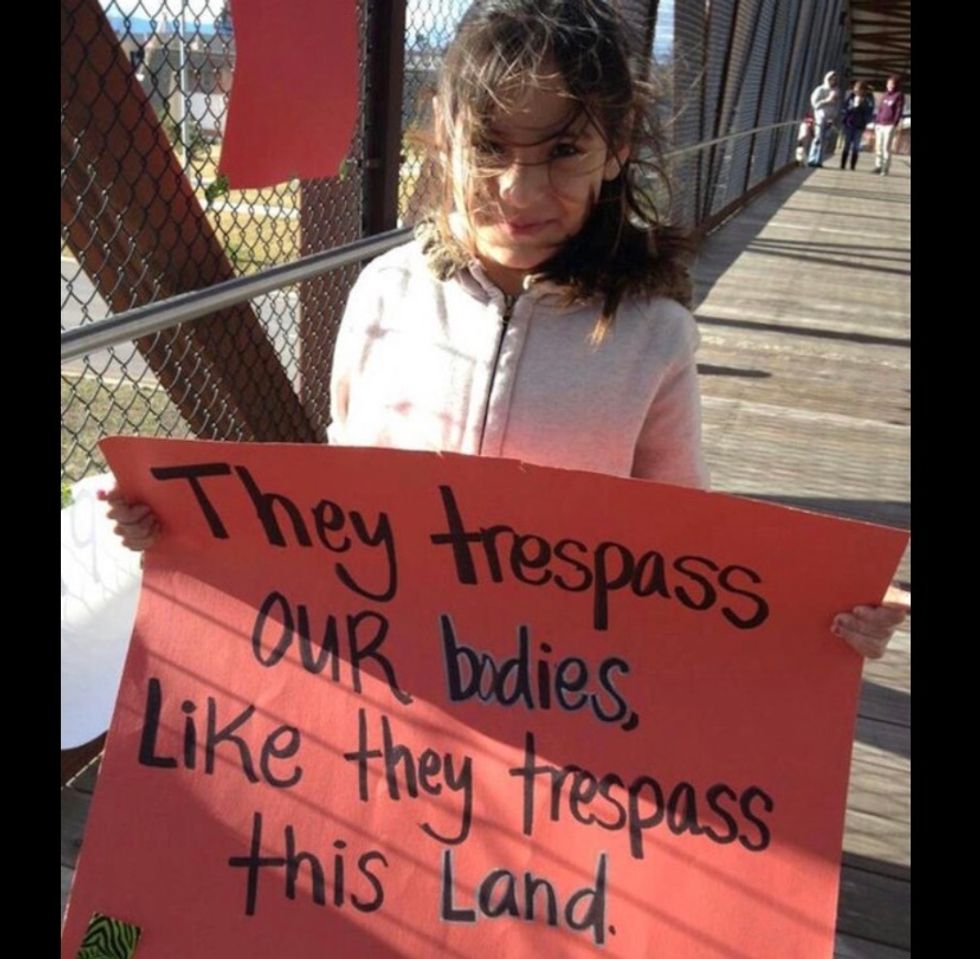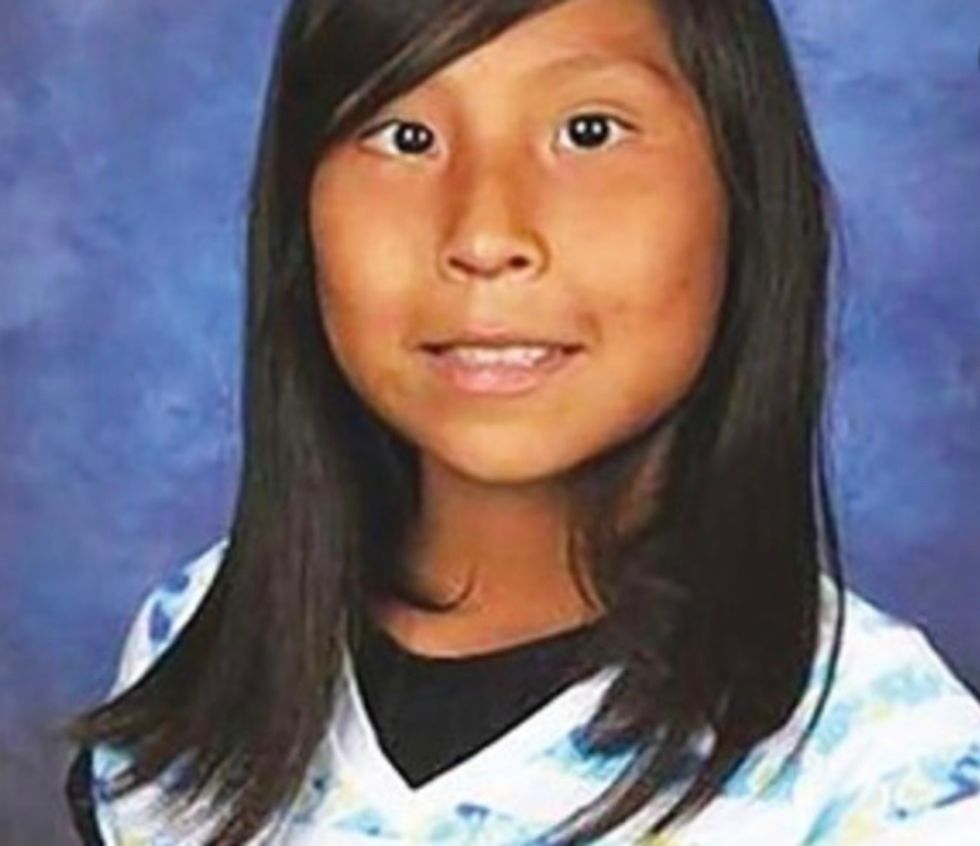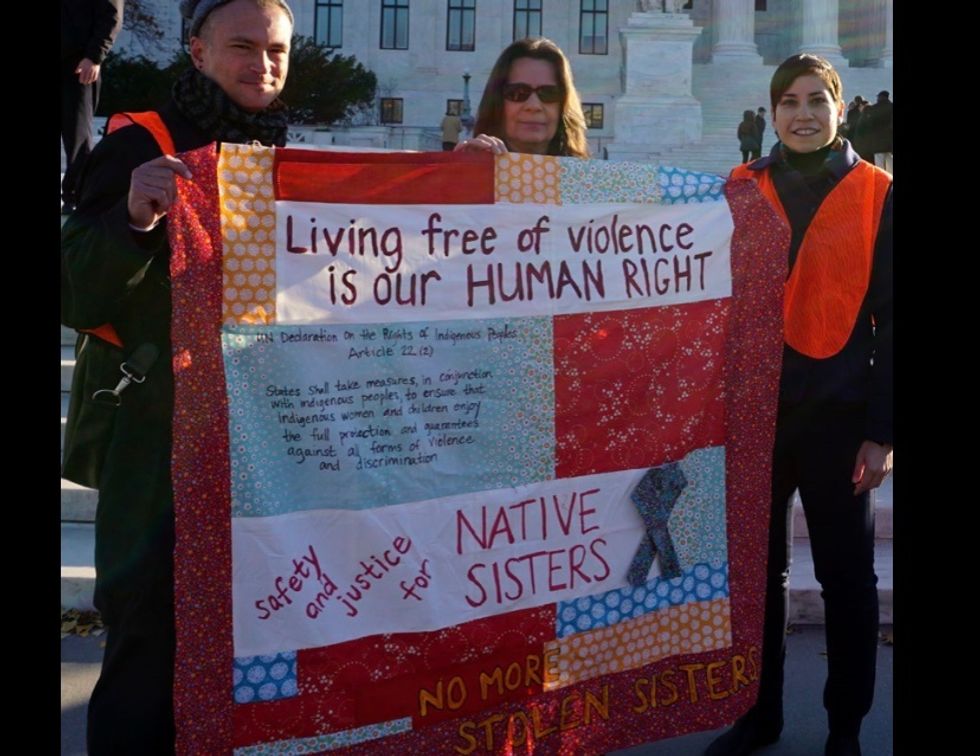Native American women are especially affected by intimate partner violence, sexual violence, abduction, and ultimately, homicide.
Intimate Partner Violence

National Center on Domestic and Sexual Violence
Intimate partner violence is the term preferred by researchers to refer to the violence perpetrated against one intimate partner (current or former boyfriend/girlfriend or spouse) against another. This is disturbingly prevalent on reservations. In fact, over half (55.5%) of all Native American Women will suffer from intimate partner violence. In comparison, the overall rate of intimate partner violence for women is 1 in 3. Therefore, Native American women are significantly more likely to experienced intimate partner violence- and this is due to a couple of factors. There is evidence to show that alcohol consumption exacerbates already abusive behavior. In other words, while drinking alcohol does not cause someone to suddenly attack an intimate partner, it does lower the person's inhibitions and that individual may cave into rage and resort to physical violence. Sadly, alcohol and substance use is commonplace on many reservations, yet there are very little resources to address this issue. Moreover, there is a substantial lack of resources available to Native women specifically on reservations. There are only 26 shelters, spanning the entire country, that are culturally designed for Native American survivors of intimate partner violence. Reservations are usually small, isolated communities. Women may fear that their attacker will retaliate against them if they seek help or will quickly find them if they try and go somewhere else on the reservation. In some tragic cases, intimate partner violence ends in murder. Some women have never left the reservation in their entire lives, so they cannot imagine leaving. More work needs to be done to better serve Native American women who are survivors of this type of violence.
Source: National Center for Coalition Against Domestic Violence
Sexual Assault

Vice
Sadly, Native American women also experience sexual violence at rates higher than females of any other race or ethnicity. Profoundly, Native Americans are three times more likely than any other race to be victimized in such a manner. Over half of all Native American women reported being the victims of sexual assault. Of course, one must also account for the fact that this statistic is likely not representative of the true prevalence of sexual assault, as rape is historically one of the most underreported crimes of all. Conversely, around 1 in 6 women of all races will experience sexual assault. Sexual assault, already a crime that has devastating effects on its victims, has even more complications for survivors who are Native American. Many times the perpetrators of sexual violence against Native American women are non-Native men. In fact, the Department of Justice reports that 86% of Native American women who are sexually assaulted were assaulted by non-Native men. This is significant, because it may provide additional legal issues. Jurisdiction refers to who has authority over individuals. For example, if a crime is committed within city limits, the city has jurisdiction. If a federal crime (such as terrorism) is committed, the federal government has jurisdiction. The tricky matter is that most reservations are sovereign governments. Essentially, these reservations have their own law enforcement and legal system, usually funded (minimally) by the federal government. These tribal reservations only have jurisdiction over Native persons; in other words, they cannot prosecute a non-Native person. In some cases, when a sexual assault against a Native American woman occurs, there is jurisdictional dispute between the tribal, state, and federal government. This delays the process of justice and in many cases, the victim either gives up or the offender is not even prosecuted. These are extremely complex cases that provide the victim with many additional challenges to face. Sexual assault against Native American women is not just limited to reservations, however; border towns, or locations situated near a reservation, are also dangerous places for these women. Native American women have been raped by non-Native men since the Colombian era; yet, very little is done to protect these women and punish their offenders. This is an injustice.
Sources: Amnesty International, National Center for Coalition Against Domestic Violence, Crime and Social Justice in Indian Country
Missing/Murdered

The late Ashlynn Mike, who was tragically murdered
NHO News
Did you know that Native American females, as reported by the Department of Justice, have ten times the murder rate as the national average? According to the Center for Disease Control (CDC) the third leading cause of death for Native American females between the ages of 10-24 is homicide. Again, this history of violence against these women goes back to centuries of colonialism, in which Native Americans, many of them women, were brutally killed by colonizers. The Urban Indian Health Institute (UIHI) conducted a study to analyze the reports of missing and murdered Native American women. The UIHI identified the top ten states with the highest number of missing and murdered Native American women:
1) New Mexico
2) Washington
3) Arizona
4) Alaska
5) Montana
6) California
7) Nebraska
8) Utah
9) Minnesota
10) Oklahoma
Sources: Urban Indian Health Institute, Crime and Social Justice in Indian Country, Coalition to Stop Violence Against Native Women
These statistics are outrageous. More work must been done to determine culturally sensitive prevention and response strategies. This is not being talked about enough. This article was intended to highlight the high prevalence of violence directed towards Native American women, often perpetrated by non-Native men. This phenomenon is shamefully nothing new; the roots can be traced back to colonialism and these imperialist attitudes still linger today. These women need more resources: they need more domestic violence shelters, more sexual assault survivor services, and less barriers to seeking justice. I encourage readers to share this article and learn more to raise awareness for these women. This month is Native American Heritage Month; we should be celebrating and honoring this culture. Feminism needs to become more intersectional: we need to raise our voices to stand up for all women. This is America and this level of violence against these women who were here first is unacceptable.
- America, We Need To Stop Leaving Native Americans Out Of Our ... ›
- Violence Against Indigenous Women ›
- The Ongoing Tragedy Of The Native Americans ›
- The Facts on Violence Against American Indian/Alaskan Native ... ›
- Violence Against Women | NCAI ›
- Native American women still have the highest rates of rape and ... ›
- Maze of Injustice – Amnesty International USA ›
- Violence Against Native American Women | Feminist Newswire ›
- Native American Women Are Facing a Crisis - The New York Times ›
- Coalition to Stop Violence Against Native Women – CSVANW – V3.0 ›
- Violence Against American Indian and Alaska Native Women and Men ›
- Addressing Epidemic of Sexual Violence Against Native Women in US ›
- Ending Violence Against Native Women | Indian Law Resource Center ›






 The minimum wage is not a living wage.
StableDiffusion
The minimum wage is not a living wage.
StableDiffusion
 influential nations
StableDiffusion
influential nations
StableDiffusion







